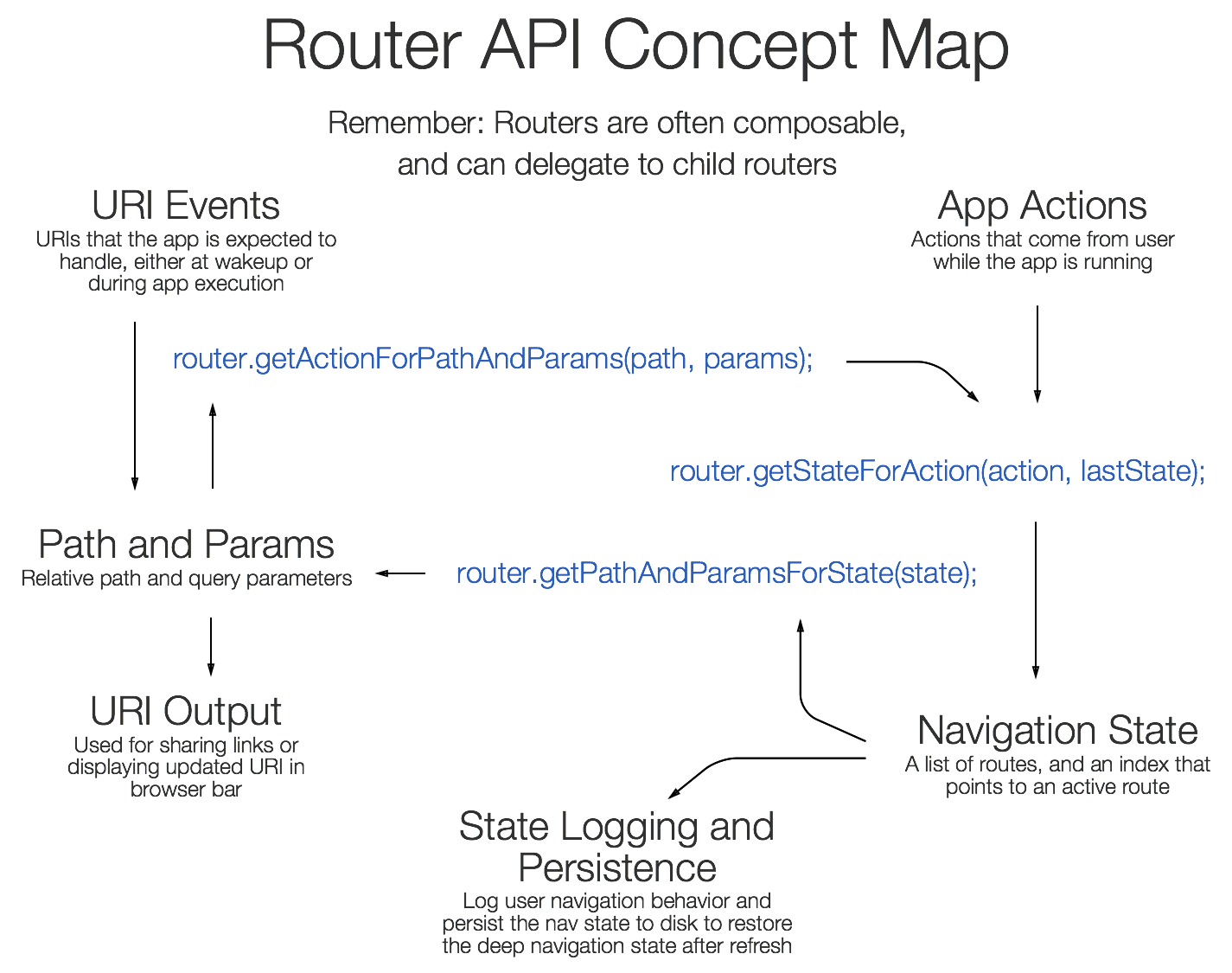Custom routers
You can make your own router by building an object with the following functions:
const MyRouter = {
getStateForAction: (action, state) => ({}),
getActionForPathAndParams: (path, params) => null,
getPathAndParamsForState: (state) => null,
getComponentForState: (state) => MyScreen,
getComponentForRouteName: (routeName) => MyScreen,
};
// Now, you can make a navigator by putting the router on it:
class MyNavigator extends React.Component {
static router = MyRouter;
render() {
...
}
}

getStateForAction(action, state)
Defines the navigation state in response to a given action. This function will be run when an action gets passed into props.navigation.dispatch(, or when any of the helper functions are called, like navigation.navigate(.
Typically this should return a navigation state, with the following form:
{
index: 1, // identifies which route in the routes array is active
routes: [
{
// Each route needs a name to identify the type.
routeName: 'MyRouteName',
// A unique identifier for this route in the routes array:
key: 'myroute-123',
// (used to specify the re-ordering of routes)
// Routes can have any data, as long as key and routeName are correct
...randomRouteData,
},
...moreRoutes,
]
}
If the router has handled the action externally, or wants to swallow it without changing the navigation state, this function will return null.
getComponentForRouteName(routeName)
Returns the child component or navigator for the given route name.
Say a router getStateForAction outputs a state like this:
{
index: 1,
routes: [
{ key: 'A', routeName: 'Foo' },
{ key: 'B', routeName: 'Bar' },
],
}
Based on the routeNames in the state, the router is responsible for returning valid components when calling router.getComponentForRouteName('Foo') or router.getComponentForRouteName('Bar').
getComponentForState(state)
Returns the active component for a deep navigation state.
getActionForPathAndParams(path, params)
Returns an optional navigation action that should be used when the user navigates to this path and provides optional query parameters.
getPathAndParamsForState(state)
Returns the path and params that can be put into the URL to link the user back to the same spot in the app.
The path/params that are output from this should form an action when passed back into the router's getActionForPathAndParams. That action should take you to a similar state once passed through getStateForAction.
getScreenOptions(navigation, screenProps)
Used to retrieve the navigation options for a screen. Must provide the screen's current navigation prop and optionally, other props that your navigation options may need to consume.
navigation- This is the navigation prop that the screen will use, where the state refers to the screen's route/state. Dispatch will trigger actions in the context of that screen.screenProps- Other props that your navigation options may need to consumenavigationOptions- The previous set of options that are default or provided by the previous configurer
Inside an example view, perhaps you need to fetch the configured title:
// First, prepare a navigation prop for your child, or re-use one if already available.
const screenNavigation = addNavigationHelpers({
// In this case we use navigation.state.index because we want the title for the active route.
state: navigation.state.routes[navigation.state.index],
dispatch: navigation.dispatch,
});
const options = this.props.router.getScreenOptions(screenNavigation, {});
const title = options.title;